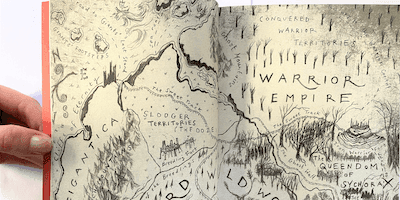Your cart is currently empty!

By Author G. F. Brynn
The first words ever written were pictures. That’s right, pictures. Why pictures? Because pictures, or illustrations, are not abstract representations of thoughts, as text is. They are mental realities.The first simple pictographs and drawings were invented and then slowly evolved over the ages in order to satisfy ancient peoples’ need to express their thoughts and, by dint of drawing those illustrations, were also given clarity of thought as they created. Drawing and seeing their finished artwork further solidified their impressions of the landscape, the people and animals around them.
If you are having a problem visualizing your current story, a few illustrations may be just what you need to better crystallize that story in your mind.
And, in the process, give yourself a healthy creative shift from text alone.While I wrote and created my literary worlds and became more emboldened to expand them and add more characters, I knew that pictures in the story would keep younger minds like my children’s engaged better than words alone could.
When you are drawing the landscape of your story, you are, in effect, drawing yourself further into that world in a more enjoyable way than simply “writing” the scene can accomplish on its own.
You don’t have to be an artistic genius to create decent story-art illustrations that enhance your imagination.
Want advanced tips for reducing distractions, overcoming writer’s block, and boosting creative confidence? Book a 1-on-1 consultation with Writing Coach Lyndsay Carder.
Pencil Sketching Tips
- Sharpen your pencil for fine lines.
- Sit comfortably and prop the sketch-pad so that it faces you directly. This prevents unconscious distortions while drawing.
- Angle the sketch-pad at a comfortable angle to your right or until your hand rests naturally on it. Of course, if you are left-handed, just mirror the angle.
- Begin at the bottom of the paper and draw upwards. Most images have a base which they grow out from and, of course, it is easier to draw up from that base than to draw down to it without error.
- Draw from left to right if you are right-handed; mirror this movement if you are left-handed. Drawing this way has a more comfortable feel and also helps prevent accidental smudging with the edge of your hand.
- When drawing straight lines, look in the direction of the draw and inhale slowly. Looking ahead of the draw is simple eye-hand coordination which gives your hand a direction to follow.Inhaling a fresh breath each time keeps your hand steadier while drawing the line. Draw upward or left to right whenever possible as this is a steadier movement for your hand. Turn the sketch-pad not your hand.
- To draw a curve, use the natural bending movement of your wrist to guide the draw. Everyone’s wrist bends through roughly 15 degrees of arc so following that arc while drawing will result in a smooth, even curve with a bit of practice. Again, turn the sketch-pad not your hand (ie: to draw a large circle).
Drawing a Story-Map
If simple sketches kept in a sketch-pad are enough reference for you to satisfactorily complete your book, then you need not read further. However, if you would love to create digital illustrations with added colour and pop, read on!Tip: To sketch on a tablet, add a matte screen protector. This will eliminate bothersome reflections and have a more natural feel with the stylus.
Scanning to your Tablet
Procreate your Art
These digitized story-art illustrations can then be shared on social media platforms, as well, to invite further attention to your works which text alone cannot accomplish.
In Conclusion
Want advanced tips for reducing distractions, overcoming writer’s block, and boosting creative confidence? Book a 1-on-1 consultation with Writing Coach Lyndsay Carder.
Photo credit: The Wizards of Once by Cressida Cowell, published by Hodder Children’s Books

Leave a Reply